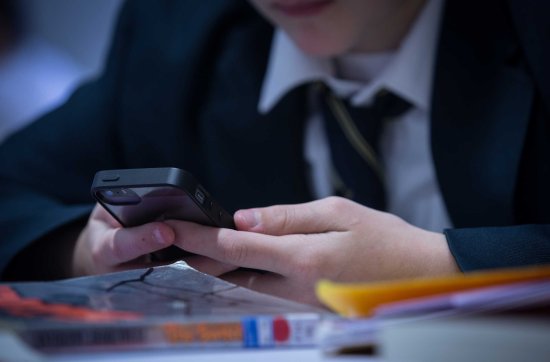
Remind helps teachers blast assignments to students and their parents
Thanks to mobile Internet browsers, text messaging and social media, cell phones have long been the enemy of teachers trying to keep students’ attention on algebra or history, not Facebook and Snapchat. But now, some teachers are using a new app to turn that scourge of distraction into a solution for helping them stay on top of their schoolwork.
San Francisco-based startup Remind makes mobile software that lets teachers blast announcements and homework assignments to students and their parents via an app powered by the cloud. Think of it as an on-the-go version of the class bulletin board — teachers can send out reminders about an upcoming test, issue study guides to absent students and even conduct real-time quizzes using the app’s two-way messaging system. And because parents get their kids’ assignments as well, it helps them keep their children more accountable for their work.
[time-brightcove not-tgx=”true”]
Remind CEO Brett Kopf says teachers have been drawn to his company’s app because it gives them more time to focus on education rather than logistics. “We believe if we can literally save teachers three, five, 10 hours a week, they have more time to engage with their students,” he says.
Kopf, 28, launched the first version of Remind along with his brother David while he was a student at Michigan State University in 2009. Kopf, who was diagnosed with dyslexia and other attention-deficit disorders in the fifth grade, had long wanted a program that could help him stay engaged with his schoolwork. Initially, he geared his app specifically toward students, who could program alerts for upcoming tests or assignments.
But the app’s breakthrough came in 2011 when Kopf moved to San Francisco and rejiggered the app as a communication and organizational tool for teachers. Once that change was made, educators flocked through the tool and helped it spread via word of mouth. Today, Remind has more than 25 million registered users globally, including 1.5 million teachers. The company claims that it’s in use by about a third of K-12 teachers in the United States.
Brad Middleton, a geometry teacher at Baldwin County High School teacher in Bay Minette, Ala., regularly uses Remind to inform parents about students’ homework assignments or remind students of upcoming tests. Also the coach of a local football team, he uses it to quickly inform parents about cancelled practices as well.
“If something changes, I can send out a text message and reach a hundred people,” Middleton says. “It’s a great way for me to get information out to a large amount of people in a short amount of time.”
Interest in Remind hasn’t only come from schoolrooms — investors are paying close attention, too. The company has received $59 million in venture funding, including a $40 million round in September that involved Kleiner Perkins and Social+Capital Partnership.
Social+Capital Founder Chamath Palihapitiya sees similarities between Remind and popular office productivity apps such as Slack, which have made it far easier for coworkers to collaborate without endless email chains.
“In their personal lives, [consumers] get the benefit of all this great software running on a mobile device,” Palihapitiya says. “Now in their professional context, they’re saying, ‘I want the same thing here.’”
It’s not yet clear how Remind will parlay its massive user base into profits. The company generates no revenue, though Kopf says features such as an emergency alert system could be offered to premium users in the future. But as it explores potential business models, Remind will have to be careful about what it does with students’ data. President Barack Obama and some lawmakers have called for new student privacy laws that would ban tech companies like Remind from selling students’ personal details or using it to serve them targeted advertisements. Remind’s app already has some privacy-minded features, like blocking teachers from seeing students’ phone numbers. The company’s current privacy policy also prohibits advertising.
There’s also the issue of the technology gap. New, potentially expensive technological innovations can further disadvantage students who lack access to them. Middleton, for instance, acknowledges that some of his Baldwin High students who don’t have cell phones have a tougher time keeping up with assignments compared to those who can easily access Remind.
One of the biggest challenges facing education technology, says Gartner K-12 analyst Kelly Calhoun, is “figuring out how to get enough devices in the hands of students that we can maintain equitable access to education no matter what.” Remind counters these issues by letting teachers distribute updates as widely as possible—messages can be accessed via app and email, as well as through SMS texting.
The past few months in education technology have been marked by some splashy investments that haven’t panned out — the Los Angeles public school system is still reeling from its botched $1 billion iPad rollout, for instance. But Remind, which is free, has been quietly offering a cheaper option for school districts looking to empower their teachers without making a big, high-risk investment in a new technology.
“Technology isn’t the answer–we believe teachers are,” Kopf says. “Our job is to just help them do their job better in engaging students and parents.”
Read next: The Next Experiment in Education
[video id=QlL0IykQ ]